15 cutting-edge innovations shaping the future of agriculture
As the global population soars towards 10 billion by 2050 and the effects of climate change intensify, the agricultural industry faces an unprecedented challenge: to meet the rising demand for food (a surge of 70%) while ensuring sustainability and minimising environmental impact. To address these priorities, a wave of innovative agricultural technologies has emerged, reshaping traditional farming practices to become more sustainable and productive.
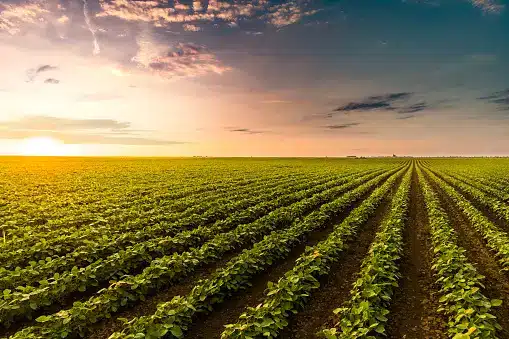
How is technology changing agriculture?
Advanced technology in agriculture is fundamentally transforming the farming industry, ushering in a new era of efficiency, sustainability, and productivity. From automation and robotics taking over labour-intensive tasks to precision agriculture harnessing data-driven insights, these advancements are revolutionising how we cultivate crops and manage livestock. These innovations collectively represent a monumental shift, empowering farmers to meet the challenges of a growing global population while promoting sustainable and resilient agricultural practices.
1. Smart soil health measurement tools
PES Technologies has introduced a revolutionary soil testing tool that streamlines the process, delivering results in just five minutes. By geotagging the topsoil sample and employing cloud-based software for analysis, this handheld reader provides comprehensive insights into biological, chemical, and physical soil health indicators. This enables farmers to make informed decisions, optimising soil conditions for optimal plant growth. RegenZ is currently working on calibrating a handheld soil analysis device in South Africa for PES Technologies.

The tool turns soil testing into a five-minute process:






2. Handheld spectrometer devices
Picture yourself at the supermarket, selecting your fresh produce. Are you drawn to the plumpest, most flawless tomato? While it may look enticing, appearances can be deceiving. Often, this beautiful-looking produce is laden with chemicals to achieve that picture-perfect look. So, how do you ensure you’re picking the healthiest, most nutritious options?
Enter the bionutrient spectrometer, a handheld marvel designed for both farmers and consumers.
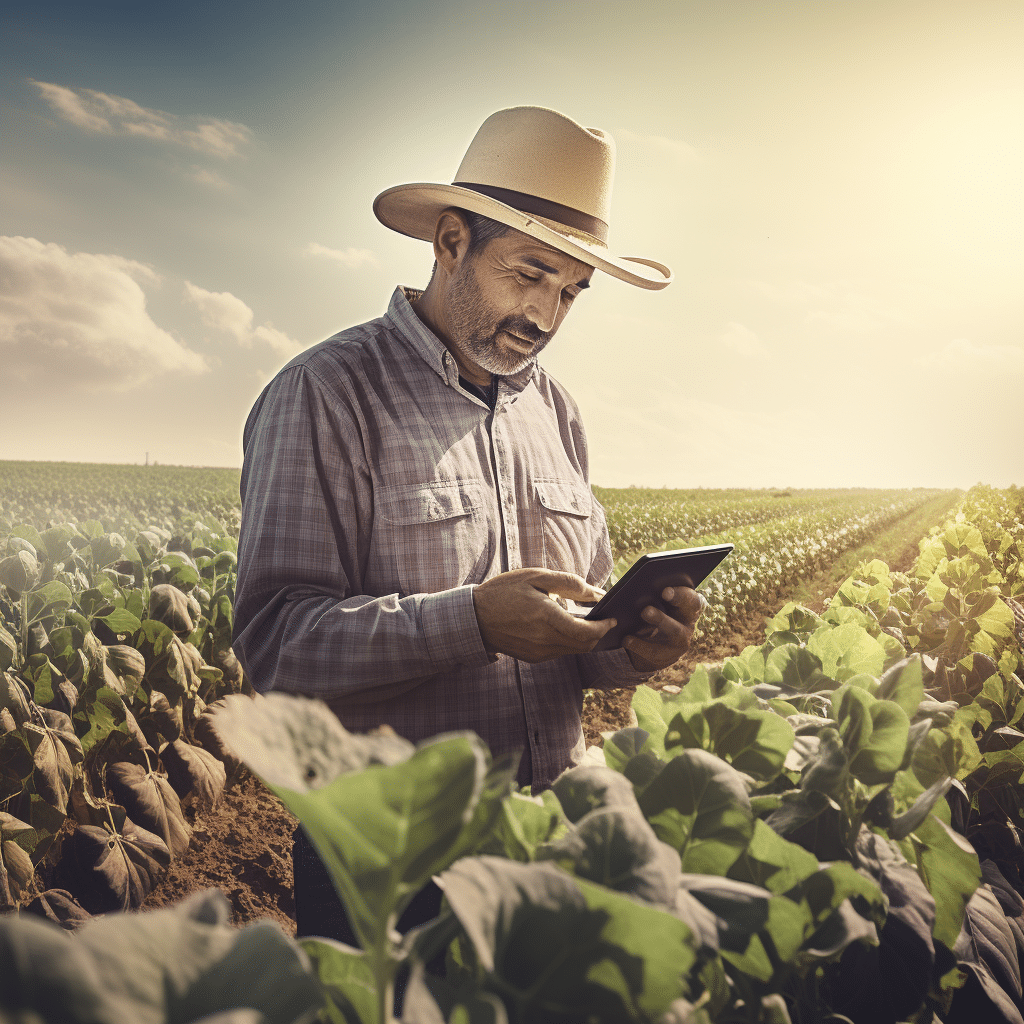
Bionutrient spectrometers have revolutionised the way we assess the nutritional value of crops. These ingenious devices employ light to scrutinise the energy wavelengths emitted by plants, providing real-time data on their nutrient composition. This breakthrough empowers farmers, buyers and consumers to make well-informed choices, fostering a move towards produce that is not just appealing to the eye, but also packed with essential nutrients.
Bionutrient spectrometers represent a game-changer in our quest for healthier food. They provide a swift, non-invasive means of evaluating crop nutrition. Armed with this knowledge, farmers can fine-tune their agricultural practices, enhancing soil health and boosting the nutrient density of their yields. This, in turn, translates into more nourishing and wholesome food options for consumers. Food establishments and bulk buyers can now offer their patrons choices that prioritise health. Furthermore, the increased transparency may well herald a departure from conventional farming methods heavily reliant on synthetic fertilisers and pesticides.
3. POLY4: fertilising the future
To meet the demands of a burgeoning global population, we must collectively adopt farming practices that bolster yields, utilise land more efficiently, and reduce environmental impact.
The introduction of POLY4, an organically-certified, naturally derived product, represents a significant stride towards achieving these goals.
At the forefront of agricultural innovation stands POLY4, a revolutionary fertiliser that encapsulates multiple vital nutrients within a single granule. Comprising four of the six essential macronutrients crucial for plant growth (potassium, sulphur, magnesium, and calcium), POLY4 is derived from polyhalite, an exceptionally rare evaporite mineral naturally low in chloride. This breakthrough not only amplifies crop yields but also curtails environmental impact by minimising nutrient runoff. With POLY4, farmers embark on a journey towards sustainable and efficient fertilisation practices, safeguarding the long-term health and productivity of their soils.
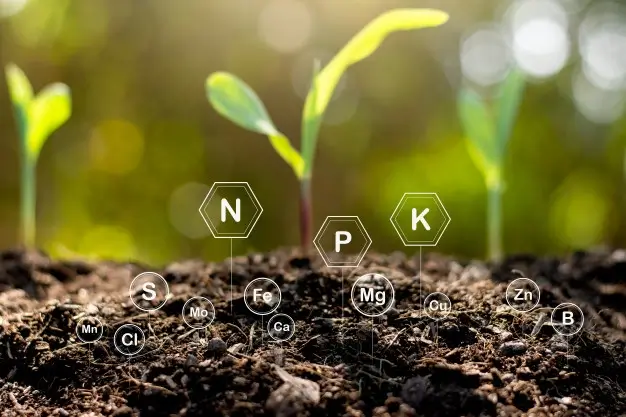
What sets POLY4 apart is its minimal environmental footprint. It requires no chemical processing and boasts the lowest CO2 emissions when compared to other fertiliser counterparts. This translates into an efficient and highly effective fertiliser that empowers farmers to optimise crop yields, enhance quality, and fortify soil structure.
POLY4 is a multi-nutrient, low-chloride fertiliser that aligns seamlessly with sustainable agricultural practices. In an era where large-scale agricultural operations are often associated with a range of environmental challenges, including climate change, pollution, soil degradation, deforestation, and habitat loss, the need for transformative, eco-conscious solutions is paramount. By incorporating POLY4 into agricultural practices, farmers can not only enhance local ecosystems but also contribute to a more sustainable global agri-food system.
POLY4 has a number of benefits, which make it suitable for widespread commercial use.
- Low carbon footprint
- Organically certified
- Consistently provides greater nutrient availability
- Strengthens and preserves the soil environment
- Improves root growth, nutrient and water uptake, which aides drought resilience
- Made with naturally occuring, multi-nutrient mineral
- Improves crop quality while maintaining flexibility in application timing
- Sustained nutrient release that meets crop demand
- Higher efficiency of supplied nutrients
- pH neutral and low in chloride
Learn All About Sustainable Farming in South Africa
4. Blockchain: Transforming transparency in agriculture
Blockchain technology is revolutionising agriculture by providing an immutable ledger for tracking produce from farm to shelf. With decentralised databases, growers and marketers can ensure the quality and authenticity of their products throughout the supply chain. This technology holds immense potential to eliminate food fraud and improve transparency, benefiting both producers and consumers.
Blockchain’s strength lies in its ability to safeguard ownership records and enhance security measures, offering a powerful solution to pressing issues within our current food system. From countering food fraud and executing safety recalls to streamlining supply chains and enhancing traceability, this technology is a game-changer. Its decentralised architecture sets the stage for verified products and practices, forging a marketplace where transparency reigns supreme.
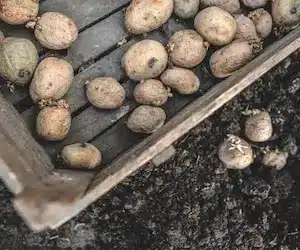
The urgency surrounding food traceability, particularly in the context of advancing blockchain applications, cannot be overstated. Given the perishable nature of food, any missteps in the supply chain can have far-reaching implications for human safety. Blockchain emerges as a pivotal tool in this context, offering a robust remedy to address these critical challenges.
Existing communication frameworks often rely on manual, paper-based tracking. Blockchain steps in as a game-changer, ensuring that information can be generated and shared securely across all parties involved. It establishes an accountable and traceable system, enabling the immediate recording of vast data points with proprietary labels, all without the risk of modification. Consequently, the movement of food from farm to table can be monitored in real-time, offering a level of precision and accountability previously unimaginable.
However, blockchain’s influence extends far beyond ensuring food safety. It introduces a new paradigm to market dynamics, establishing a ledger within the network that can balance pricing. Unlike traditional methods reliant on subjective judgments, this approach draws on data derived from the entire value chain. The result is a marketplace characterised by unprecedented transparency, providing a holistic view of supply and demand dynamics.
As blockchain continues to weave its transformative narrative within the agricultural landscape, it heralds a future where transparency, accountability, and innovation converge to create a more secure and efficient food supply chain for all of us.
5. IoT in agriculture
IoT technologies are empowering farmers with real-time monitoring capabilities for crops, soil, livestock, and environmental conditions. With data from a series of sensors, farmers can efficiently manage resources, automate irrigation, and make data-driven decisions. This fosters sustainable farming practices, conserving water and optimising resource utilisation for increased productivity.
These cutting-edge technologies utilise a network of interconnected sensors to deliver real-time data on crucial aspects like crop health, soil conditions, livestock well-being, and the broader environmental context. This wealth of information equips farmers with the tools they need to make highly informed, timely decisions.
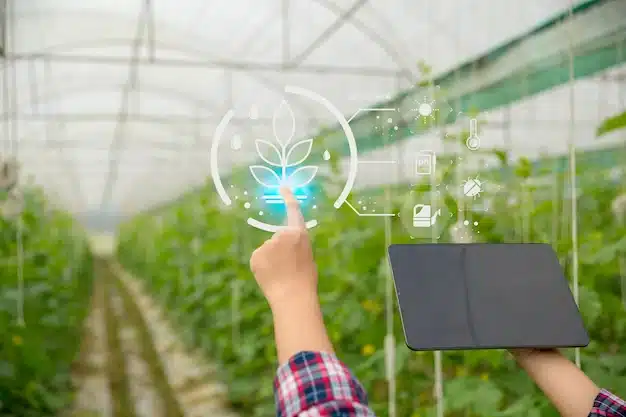
Imagine a farm where every corner is equipped with sensors tuned into the needs of the land and its inhabitants. These sensors continuously collect data on moisture levels in the soil, the health of crops, the temperature, humidity, and other environmental factors. This information is then transmitted in real-time to a central hub where it’s analysed and transformed into actionable insights.
One of the key advantages of IoT in agriculture lies in its ability to enable precision farming. Armed with this real-time data, farmers can fine-tune their resource allocation strategies. For instance, if a specific area of the field is experiencing higher moisture levels, irrigation can be automatically adjusted to avoid overwatering. Similarly, if soil conditions indicate a need for specific nutrients, precise applications can be made, eliminating waste and maximising the benefits to the plants.
This level of precision not only enhances resource efficiency but also fosters sustainable practices. By conserving water and optimising resource utilisation, farmers are contributing to the conservation of precious resources. This is particularly crucial in a world where water scarcity is becoming an increasingly pressing issue.
IoT technologies extend their benefits to livestock management. Sensors can monitor vital signs, feeding patterns, and even the location of animals. This ensures that each animal is well-cared for, promoting healthier, more productive livestock.
Ultimately, the implementation of IoT in agriculture is not just about leveraging technology; it’s about embracing a new era of farming where data-driven decisions become the norm. It empowers farmers to adapt swiftly to changing conditions, mitigate risks, and maximise their yield potential. In doing so, it paves the way for a more sustainable, efficient, and productive future for agriculture.
6. GIS in agriculture
Geographic Information Systems (GIS) leverage drones and satellites to gather critical data on crop types, soil conditions, and fertilisation levels. This information empowers farmers to make data-driven decisions, optimising crop placement and soil nutrition. GIS technology is instrumental in maximising yield while minimising resource usage, and ensuring sustainable agricultural practices.
Imagine a digital map of a farm, where every inch is meticulously documented and analysed. Drones soar above, capturing high-resolution imagery that reveals intricate details about the crops and the land they grow on. Simultaneously, satellites orbit the Earth, collecting a trove of data on vegetation health, soil composition, and even temperature variations across the farm. This vast repository of information is then processed through advanced GIS software, generating detailed reports and visualisations that provide farmers with a precise understanding of their agricultural landscape.
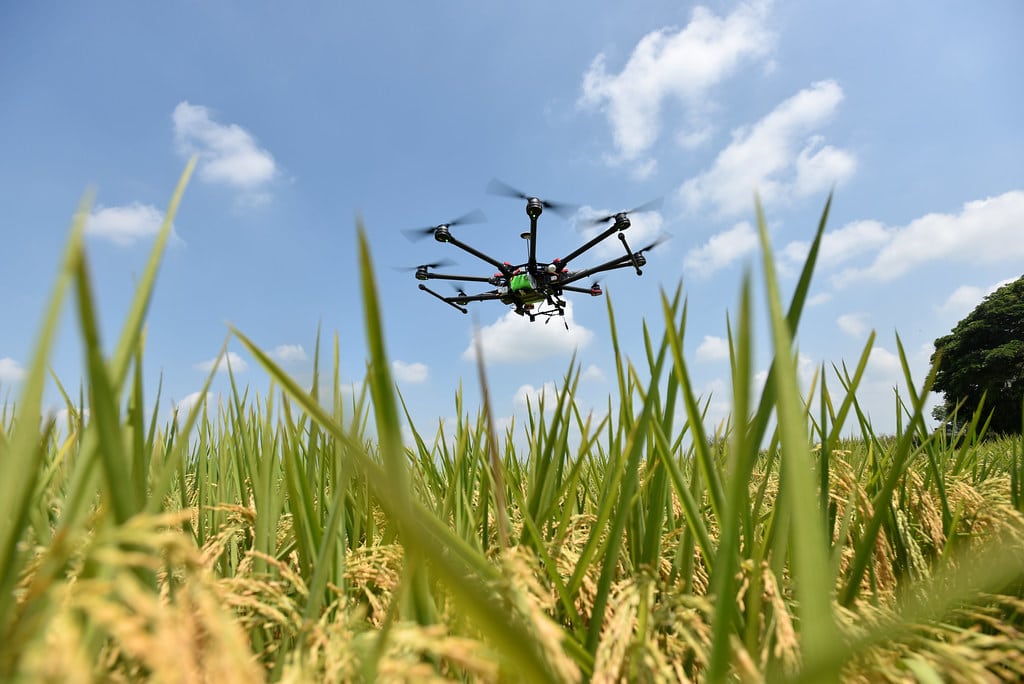
One of the most powerful applications of GIS in agriculture lies in its ability to optimise crop placement. By identifying variations in soil type, moisture levels, and other key factors, farmers can strategically allocate their resources. For instance, a field with a particularly fertile patch of soil might be earmarked for high-value crops, while areas with different characteristics might be better suited for alternative options. This data-driven approach maximises yield potential and minimises resource wastage.
GIS technology also plays a pivotal role in fine-tuning soil nutrition. By analysing soil samples and cross-referencing them with geographic data, farmers gain invaluable insights into the precise needs of their crops. This allows for targeted fertilisation strategies, ensuring that each plant receives the nutrients it requires for optimal growth. The result is a more efficient use of resources, minimising excess application of fertilisers and reducing environmental impact.
Perhaps most importantly, GIS empowers farmers with the tools they need to practise sustainable agriculture. By leveraging data-driven decision-making, they can implement practices that promote both productivity and environmental stewardship. This includes measures such as precision irrigation, which conserves water resources, and strategic crop rotation, which fosters soil health and minimises the risk of pests and diseases.
7. AI/ML & data science
Advanced technologies like artificial intelligence (AI), machine learning (ML), and data science are transforming agricultural forecasting. By employing 3D laser scanning and spectral imaging, farmers can predict weather scenarios and optimise resource allocation for irrigation, fertilisation, and pest control. These technologies enable precise decision-making, ensuring efficient resource utilisation for sustainable crop production.
Picture this: on a farm, 3D laser scanning and spectral imaging technologies are employed to gather a wealth of detailed data. These advanced techniques paint a comprehensive picture of the environment, capturing everything from the topography of the land to the spectral signatures of crops. This information is then fed into sophisticated AI and ML algorithms, which, in turn, process it to generate highly accurate forecasts.
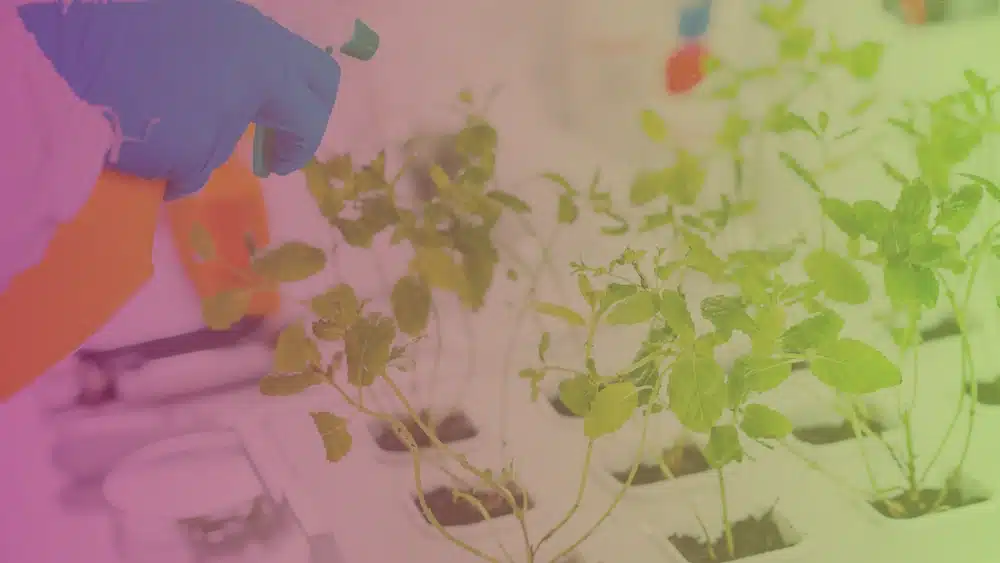
Some of the most impactful applications of AI and ML in agriculture:

Weather prediction: By analysing historical weather patterns and current atmospheric conditions, these technologies can provide remarkably accurate forecasts. This empowers farmers to anticipate weather scenarios with a high degree of confidence, allowing them to plan and make informed decisions regarding crucial tasks like irrigation, fertilisation, and pest control.
Optimising resource allocation: By factoring in a multitude of variables, such as soil moisture levels, crop type, and weather predictions, these technologies help farmers make precise decisions about when and where to allocate resources. For example, in anticipation of a dry spell, irrigation efforts can be concentrated on the areas that need it most, ensuring that water is used efficiently and effectively.


Pest management: Through the analysis of data on pest behaviour, population trends, and environmental conditions, AI and ML can help farmers implement targeted control measures. This reduces the need for widespread chemical applications, minimising environmental impact while still safeguarding crops.
Driving sustainable crop production: By optimising resource utilisation and minimising waste, these technologies contribute to the long-term health of both the environment and agricultural operations. They empower farmers to practise precision agriculture, a methodology that aligns with the principles of sustainability and resource conservation.

What is crop diversity and why is it important?
8. Regenerative agriculture
Regenerative agriculture is a visionary approach to farming, guided by five fundamental principles that promise to reshape the agricultural landscape. At its core, this transformative method seeks to go beyond traditional farming practices and forge a path towards a more sustainable, resilient, and regenerative future.
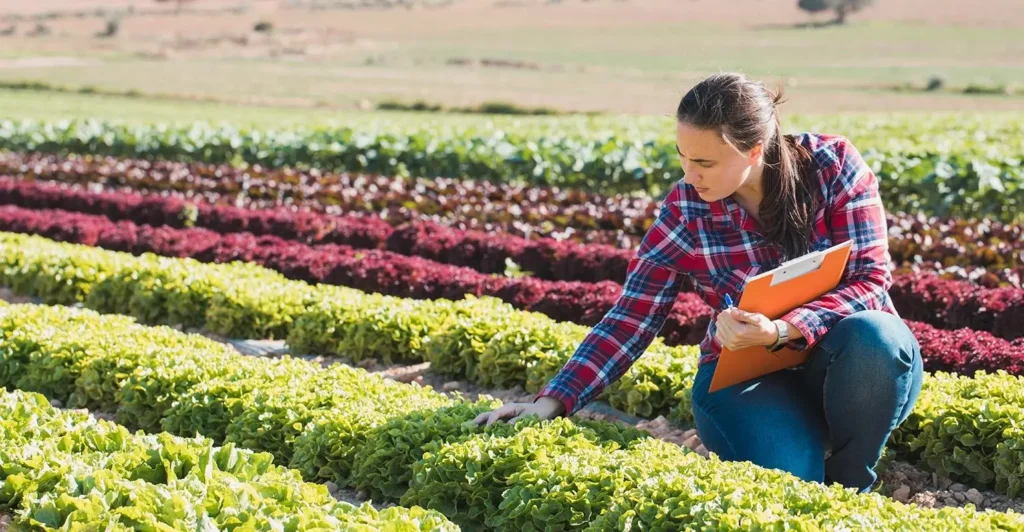

Promoting biodiversity: In regenerative agriculture, biodiversity takes centre stage. This principle acknowledges the interconnectedness of all life forms on the farm. By fostering a rich tapestry of plants, insects, and wildlife, farmers create a thriving ecosystem that supports natural processes. Diverse plantings not only enhance the overall health of the farm but also serve as a natural defence against pests and diseases.
Improving soil health: Soil is the bedrock of any successful farm, and regenerative agriculture recognizes this with utmost importance. Through techniques like cover cropping, crop rotation, and minimal tillage, regenerative farmers work to replenish and fortify their soil. By nurturing a robust soil ecosystem teeming with beneficial microorganisms, nutrients are made more accessible to plants, resulting in healthier and more resilient crops.


Conservation practices: Conservation lies at the heart of regenerative agriculture. This involves strategic approaches to managing natural resources, such as water and energy, with a keen eye on long-term sustainability. By employing methods like water-saving irrigation techniques and renewable energy sources, regenerative farmers reduce their environmental footprint while ensuring resources remain available for generations to come.
Decarbonising the food system: Regenerative agriculture tackles the urgent issue of climate change head-on. By sequestering carbon in the soil through practices like agroforestry and rotational grazing, farmers play a crucial role in mitigating greenhouse gas emissions. This not only benefits the farm itself but also contributes to broader efforts to combat climate change.


Building resilience: Climate shocks and unpredictable weather patterns pose significant challenges to modern agriculture. Regenerative practices are designed to enhance the farm’s resilience in the face of these challenges. By diversifying crops and employing techniques like water conservation, regenerative farmers are better equipped to weather the storms, both literally and metaphorically.
9. Controlled environment agriculture (CEA)
Controlled environment agriculture (CEA), which incorporates vertical farming and indoor farming, revolutionises crop cultivation by creating a controlled growing environment. By providing water, nutrients, and light through hydroponic, aquaponic, or aeroponic techniques, CEA maximises space utilisation and minimises water consumption by up to 99%. This technology represents a significant leap towards sustainable and resource-efficient farming practices. It also significantly reduces the amount of land space needed to grow plants compared to traditional farming methods.
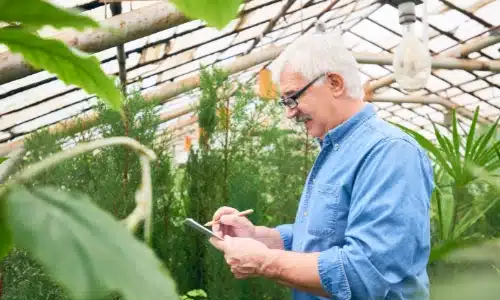
One of the remarkable features of CEA is its ability to maximise space and water utilisation. Vertical farming, for example, allows crops to be stacked in layers, significantly increasing the yield from a given footprint. This vertical approach multiplies the growing capacity, making it possible to cultivate a substantial amount of produce in a relatively small area. This is particularly impactful in densely populated urban environments where available land for agriculture is limited.
Growing crops indoors or within controlled environments also shields farmer shielded from the whims of weather patterns and seasonal fluctuations. This translates to a more stable and reliable supply of fresh produce year-round, mitigating the risks associated with outdoor farming.
5 Agritech Devices Revolutionising Agriculture in 2023
10. Agricultural robotics
Agricultural robots, or agribots, are reshaping the farming landscape by taking on a wide array of tasks traditionally performed by human hands. These robots are equipped with specialised tools and technologies tailored to specific agricultural processes.
For instance, planting robots use precise mechanisms to sow seeds at optimal depths and intervals, ensuring optimal germination. Livestock management robots assist in tasks like feeding, monitoring animal health, and even milking. Some robots are designed to navigate autonomously through fields, identifying and removing weeds with impressive accuracy, reducing the need for chemical herbicides. Others, equipped with advanced imaging systems, can assess the ripeness of fruits and vegetables, enabling selective harvesting for maximum quality and yield.
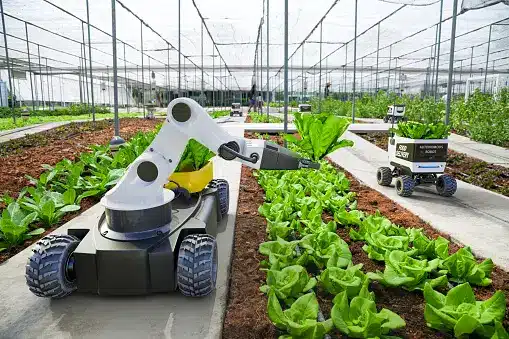
These agribots are not only efficient in their tasks but also work tirelessly, round the clock, in a variety of weather conditions. By automating these labour-intensive operations, agribots save valuable time and resources for farmers. This means that farmers can redirect their focus towards strategic planning, data analysis, and decision-making, ultimately leading to increased efficiency, higher yields, and improved profitability.
11. Drones: aerial insights for precision agriculture
Drones have taken precision agriculture to new heights, quite literally. UnmannedAerial Vehicles (aka drones) equipped with sensors and cameras revolutionise crop and livestock management. They provide invaluable data on plant growth, disease detection, and field conditions. Drones offer farmers a bird’s-eye view of their operations, enabling timely interventions and maximising crop yield.
Equipped with an array of sophisticated sensors, including multispectral cameras and LiDAR (Light Detection and Ranging), drones capture high-resolution aerial imagery of fields. This data is then processed through advanced software to generate detailed maps and analytics.
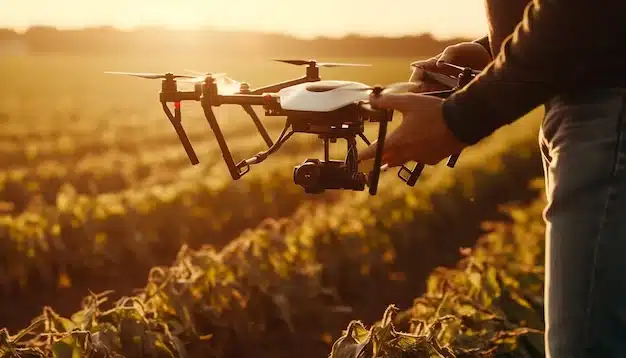
Drones provide invaluable insights into plant health, allowing farmers to detect early signs of stress, nutrient deficiencies, or disease outbreaks. With this information in hand, farmers can take targeted actions, such as adjusting irrigation or applying specific fertilisers, to address these issues promptly. Drones also play a crucial role in monitoring field conditions, helping farmers make informed decisions about planting, harvesting, and overall crop management.
Beyond crops, drones are instrumental in livestock management. They can be used to monitor animal health, count livestock, and even track their movements. This aerial perspective provides a comprehensive view of the entire farm, enabling farmers to make data-driven decisions that optimise their operations and maximise crop yield.
12. Precision agriculture
Precision agriculture harnesses data-driven insights to optimise resource utilisation. By employing new agricultural technologies like remote sensing, drones, and automation, farmers can fine-tune variables like moisture levels, soil conditions, and microclimates. This approach enhances resource efficiency, profitability, and sustainability in modern agriculture.
For instance, remote sensing technologies collect data on soil moisture levels, nutrient content, and temperature variations. This information is then integrated with GPS data to create precise field maps, enabling farmers to make customised decisions for each section of their land. By tailoring irrigation, fertilisation, and pest management strategies to specific conditions, farmers optimise resource utilisation and minimise waste.
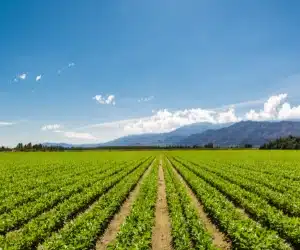
Automation also plays a pivotal role in precision agriculture. Tractors and machinery equipped with GPS-guided systems can perform tasks with remarkable accuracy, reducing overlaps and ensuring even coverage. This not only improves efficiency but also conserves resources, ultimately leading to higher profitability.
By harnessing the power of data and agricultural technology, precision agriculture empowers farmers to make informed, data-driven decisions. It’s a transformative approach that enhances resource efficiency, increases profitability, and promotes sustainability in modern agriculture.
Regenerative Hemp Farming in South Africa
13. Agricultural biotechnology
Through genetic engineering, agricultural biotechnology holds the key to increased production and global food security. While concerns exist, adherence to regulatory standards ensures the safety of genetically modified organisms. By improving crop traits, agricultural biotechnology contributes to climate-resilient farming practices, ensuring a more sustainable and productive future.
One of the key advantages of genetic engineering is its potential to create crops that are more resilient to environmental stresses. This includes traits like drought tolerance, which can be crucial in regions prone to water scarcity. Additionally, biotechnology can produce crops with improved nutritional profiles, addressing dietary deficiencies in various parts of the world.

However, it’s important to note that there are concerns surrounding the safety and ethical considerations of genetically modified organisms (GMOs). Adherence to rigorous regulatory standards and transparent communication about the benefits and potential risks is essential to ensure the responsible use of agricultural biotechnology.
14. Big data & analytics
Farms are rapidly evolving into data-driven enterprises, with a multitude of sensors collecting vast amounts of information. Big data and analytics technologies play a pivotal role in transforming this wealth of data into actionable insights.
For example, soil sensors monitor moisture levels, while weather stations provide real-time climate data. These sensors are integrated with advanced analytics platforms that process this information, offering recommendations on optimal planting times, irrigation schedules, and harvest dates. This technology enables farmers to fine-tune their operations for maximum efficiency and productivity.
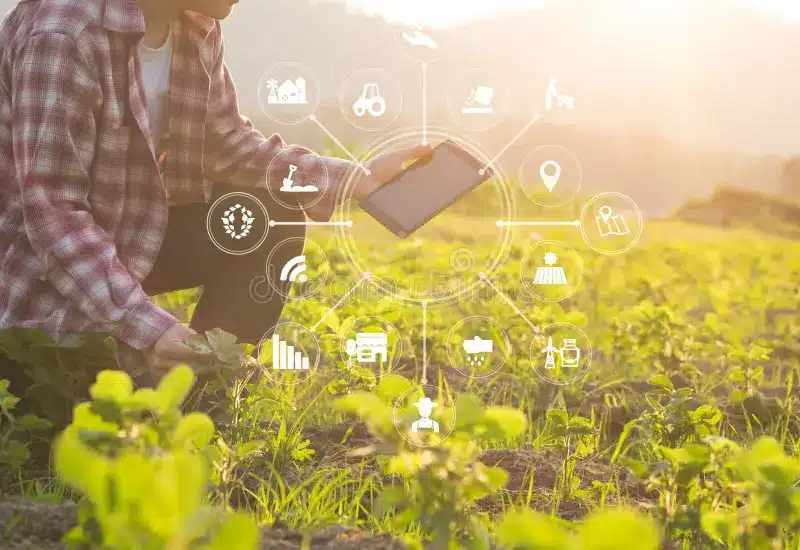
Additionally, data analytics can help identify trends and patterns in crop performance, allowing farmers to make informed decisions about crop selection and rotation. It can also assist in predicting pest outbreaks and disease patterns, enabling timely interventions to protect crops.
By harnessing the power of big data and analytics, farmers gain a competitive edge in optimising their operations, ultimately leading to increased yields and profitability.
15. Connectivity technologies
In today’s information-driven world, connectivity technologies play a pivotal role in agriculture. From mobile devices to satellite technology and internet-based platforms, farmers can exchange critical information, make informed decisions, and reach potential buyers. This interconnectedness fosters efficiency, transparency, and growth in agricultural practices.
Mobile applications provide farmers with instant access to weather forecasts, market prices, and agricultural best practices. Satellite technology offers precise GPS data for precision agriculture practices. Online platforms connect farmers directly with buyers, cutting out middlemen and ensuring fair prices for their produce.
This interconnectedness fosters efficiency, transparency, and growth in agricultural practices, empowering farmers with the tools they need to thrive in a rapidly evolving global marketplace.
These advanced technologies collectively represent a monumental leap forward in modern agriculture. By leveraging robotics, drones, precision techniques, biotechnology, data analytics, and connectivity, farmers are equipped with a powerful toolkit to meet the challenges of feeding a growing global population while promoting sustainability and efficiency in agricultural practices.
What are some of the factors affecting adoption of agricultural technology?

Cost of agricultural technology: The initial investment required for adopting new agricultural technologies can be a significant barrier for many farmers, especially those with limited financial resources.

Access to capital: Availability of credit and financing options for farmers plays a crucial role in enabling them to invest in new technologies. Limited access to capital can hinder adoption rates.

Education and training: Adequate training and education on how to use and integrate new agricultural technologies are essential. Lack of knowledge or expertise can deter farmers from adopting unfamiliar tools or practices.

Infrastructure and connectivity: Access to reliable and high-speed internet connectivity is critical for technologies like IoT, data analytics, and online platforms. Rural areas with limited infrastructure may face challenges in technology adoption.

Scale of operations: The size and scale of a farm can impact the feasibility and benefits of adopting certain advanced agricultural technologies. Large-scale commercial farms may have more resources to invest in advanced technologies.

Regulatory environment: Government policies and regulations, including approval processes for genetically modified organisms (GMOs) and other biotechnologies, can influence the adoption of certain agricultural technologies.

Cultural and social factors: Traditional farming practices, cultural beliefs, and social norms can influence a farmer’s willingness to adopt new technologies. Resistance to change or fear of the unknown may be factors.

Risk tolerance: Farmers’ willingness to take risks and adopt new agricultural technologies. Some may be more conservative and prefer sticking to traditional methods, while others may be more open to innovation.

Market access and demand: The presence of a reliable market and demand for technologically advanced products can incentivise farmers to adopt new technologies that align with market preferences.

Environmental concerns: Environmental considerations, such as concerns about pesticide use or sustainability, can influence the adoption of certain technologies. Farmers may be more inclined to adopt practices that align with conservation goals.

Weather and climate conditions: Climate variability and unpredictable weather patterns can impact the suitability and effectiveness of certain technologies, particularly those related to precision agriculture.

Peer influence and networks: The influence of peers and fellow farmers who have successfully adopted certain technologies can be a powerful motivator for others to follow suit.
Considering these factors and tailoring technology adoption strategies to address specific challenges can help facilitate the adoption of agricultural technologies among a diverse range of farmers.
How Does Regenerative Farming Work?
Embracing a smarter future with new technological trends in agriculture
As the demand for food surges and environmental challenges loom, the integration of innovative agricultural technologies becomes imperative. From smart soil testing tools to blockchain-driven traceability, these advancements are revolutionising farming practices. By adopting these technologies, farmers can navigate the complexities of modern agriculture, ensuring sustainable, efficient, and resilient food production for generations to come.